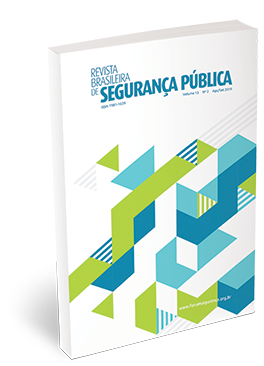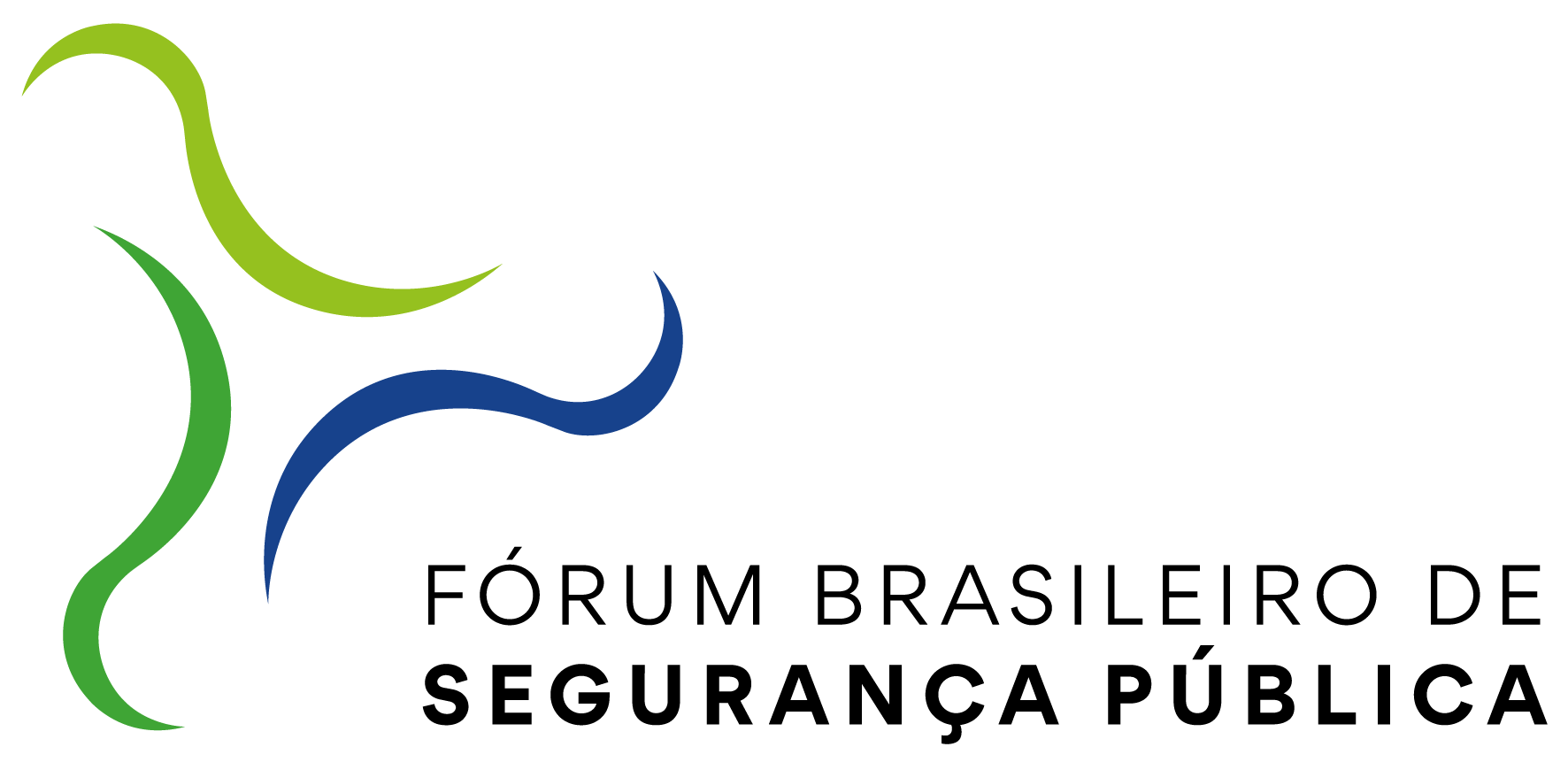Factors affecting violence practice by students in the school environment in the state of Minas Gerais
DOI:
https://doi.org/10.31060/rbsp.2019.v13.n2.982Keywords:
School violence, Agression, Minas Gerais, LogitAbstract
This paper investigates internal and external factors which influence the violence committed by students in schools in the State of Minas Gerais. The Schools are a teaching and learning environment designed to prepare the student for social inclusion, but the mounting in urban violence has influenced delinquent behavior in schools. In order to evaluate the probability of a student committing aggression in school, a logit model was estimated using the data from Prova Brasil of 2011. The results indicate that teacher aggression, theft and life attempt are the variables of the school environment, which increase the most the probability of the student to commit an aggression in the school. The same goes for external variables, especially drug trafficking. On the other hand, the investments in school safety and surveillance are not sufficient to mitigate the problem, once they are measures of immediate combat against school violence, which requires actions involving social support, such as the interaction between school and community.
Downloads
References
ABRAMOVAY, M. Gangues, galeras, chegados e rappers: juventude, violência e cidadania nas cidades da periferia de Brasília. Brasília: Editora Garamond, 1999.
ABRAMOVAY, M.; RUA, M. G. Violência nas escolas. Brasília: UNESCO, Coordenação DST/AIDS do Ministério da Saúde, Secretaria de Estado dos Direitos Humanos do Ministério da Justiça, CNPq, Instituto Ayrton Senna, UNAIDS, Banco Mundial, USAID, Fundação Ford, CONSED, UNDIME, 2002.
AGNEW, R. Foundation for a general strain theory of crime and delinquency. Criminology, v. 30, n. 1, p. 47-88, 1992.
AKERS, R. L. Social learning and social structure: a general theory of crime and deviance. Boston, Ma: Northeastern University Press, 1998.
ALLEN, J. P.; PORTER, M. R.; MCFARLAND, F. C. Leaders and followers in adolescent close friendships: susceptibility to peer influence as a predictor of risky behavior, friendship instability, and depression. Development and Psychopathology, v. 18, n. 1, p. 155-172, 2006.
AMMERMUELLER, A. Violence in European schools: victimization and consequences. Discussion Paper, Centre for European Economic Research (ZEW), Mannheim, Alemanha, p.1-40, 2007.
ARAUJO JUNIOR, A.; FAJNZYLBER, P. Crime e economia: Um estudo das microrregiões mineiras. Revista Econômica do Nordeste, v. 31, p. 630-659, 2000.
ASSINK, Mark et al. Risk factors for persistent delinquent behavior among juveniles: A meta-analytic review. Clinical psychology review, v. 42, p. 47-61, 2015.
BARTZ, M. L.; QUARTIERI, E. Da S.; DE FREITAS, T. A. Indisciplina e violência escolar: uma análise das escolas públicas do Rio Grande do Sul.Revista Estudo & Debate, v. 24, n. 3, p. 241-263, 2017.
BECKER, G. S. Crime and punishment: An economic approach. The economic dimensions of crime. London: Palgrave Macmillan, 1968. p. 13-68.
BECKER, K. L.; KASSOUF, A. L. Violência nas escolas públicas brasileiras: uma análise da relação entre o comportamento agressivo dos alunos e o ambiente escolar. Nova Economia, v. 26, n. 2, p. 663-677, 2016.
BRUMLEY, L. D.; JAFFEE, S. R. Defining and distinguishing promotive and protective effects for childhood externalizing psychopathology: a systematic review. Social psychiatry and psychiatric epidemiology, v. 51, n. 6, p. 803-815, 2016.
CARROLL, B. The effects of school violence and crime on academic achievement. Davidson College, 2006.
CERQUEIRA, D.; LOBÃO, W. Determinantes da criminalidade: arcabouços teóricos e resultados empíricos.Dados - Revista de Ciências Sociais, v. 47, n. 2, p. 233-269, 2004.
COSTA, P. R. Multiplicando os pontos de vista sobre a violência nas escolas: Estudo comparativo do clima escolar em duas escolas públicas de Belo Horizonte. 2005. Dissertação (mestrado em educação) – Faculdade de Educação da Universidade Federal de Minas Gerais, Belo Horizonte, 2005.
FARRINGTON, D. P. Childhood aggression and adult violence: Early precursors end later-life outcomes. In: PEPPLER, J; RUBIN K. (Ed.). The development and treatment of childhood aggression. Toronto: Psychology Press, 1990. p. 5-25.
FARRELL, A. D.; THOMPSON, E. L.; MEHARI, K. R. Dimensions of peer influences and their relationship to adolescents’ aggression, other problem behaviors and prosocial behavior. Journal of youth and adolescence, v. 46, n. 6, p. 1351-1369, 2017.
FREEMAN, R. B. The economics of crime. Handbook of Labor Economics. Amsterdam: Elsevier Science, 1999.
GRANERO, R.; PONI, E.S.; ESCOBAR-PONI, B.C.; ESCOBAR, J. Trends of violence among 7th, 8th and 9th grade students in the state of Lara, Venezuela: The Global School Health Survey 2004 and 2008. Arch Public Health, v. 69, n. 1, p. 7, 2011.
GREENE, W. H. Econometric analysis. New York: Pearson Education India, 2003.
GROGGER, J. Local violence and educational attainment. Journal of Human Resources, Madison, v. 32, n. 4, p. 659-682, 1997.
GUIMARÃES, M. E. Escola, galeras e narcotráfico. Rio de Janeiro: Editora da UFRJ, 1998.
HEAVNER, D. L.; LOCHNER, L. Social Networks and the Aggregation on Individual Decisions. National Bureau of Economic Research, 2002. Working Paper n. w8979.
HENRICH, C. C.; SCHWAB-STONE, M.; FANTI, K.; JONES, S. M.; RUCHKIN, V. The association of community violence exposure with middle-school achievement: a prospective study.Journal of Applied Developmental Psychology, v. 25, n. 3, p. 327-348, 2004.
LEITE, M. R. S. D. T. Projetos Sociais como Medida de Combate à Violência nas Escolas: Um Desafio Para o Setor Educacional Brasileiro. In: ENCONTRO DA ANPAD, 32, 2008, Rio de Janeiro. Anais do evento. Rio de Janeiro: ANPAD, 2008.
MACEDO, R.M.A.; BOMFIM, M.C.A. Violências na escola. Rev Diálogo Educ, v. 9, n. 28, p. 605-618, 2009.
MARTINS, A. M.; MACHADO, C.; FURLANETTO, E. C. Mediação de conflitos em escolas: entre normas e percepções docentes. Cadernos de Pesquisa, v. 46, n. 161, p. 566-592, 2016.
MCGARVEY, M.; SMITH, W. J; WALKER, M. B. The interdependence of school outcomes and school and neighborhood crime. Nebraska: Georgia State University, Department of Economics, 2006. Working Paper 07-19.
MOON, B. et al. Violence against teachers in South Korea: Negative consequences and factors leading to emotional distress. Violence and victims, v. 30, n. 2, p. 279-292, 2015.
OMS. World report on violence and health. Genebra: WHO, 2002.
RATNER, H. H.; CHIODO, L.; COVINGTON, C.; SOKOL, R. J.; AGER, J; DELANEY-BLACK, V. Violence exposure, IQ, academic performance, and children’s perception of safety: evidence of protective effects. Merrill-Palmer Quarterly, v. 52, n. 2, p. 264-287, 2006.
SPOSITO, M. P. Um breve balanço da pesquisa sobre violência escolar no Brasil. Educação e pesquisa, v. 27, n. 1, p. 87-103, 2001.
TAVARES, P. A.; PIETROBOM, F. C. Fatores associados à violência escolar: evidências para o Estado de São Paulo. Estudos Econômicos, v. 46, n. 2, p. 471-498, 2016.
TEIXEIRA, E. C.; KASSOUF, A. L. Impacto da violência nas escolas paulistas sobre o desempenho acadêmico dos alunos. Economia Aplicada, v. 19, n. 2, p. 221-240, 2015.
UNESCO. Lidando com a violência nas escolas: o papel da UNESCO/Brasil. Brasília, DF: Unesco, 2003.
WELSH, Ralph S. Delinquency, corporal punishment, and the schools. Crime & Delinquency, v. 24, n. 3, p. 336-354, 1978.
WOLFF, K. T.; BAGLIVIO, M. T. Adverse childhood experiences, negative emotionality, and pathways to juvenile recidivism. Crime & Delinquency, v. 63, n. 12, p. 1495-1521, 2017.
WOOLDRIDGE, J. M. Econometric analysis of cross section and panel data. Cambridge: MIT press, 2010.
Downloads
Published
How to Cite
Issue
Section
License
Copyright (c) 2019 Revista Brasileira de Segurança Pública

This work is licensed under a Creative Commons Attribution 4.0 International License.
Licensing
The Brazilian Journal of Public Security uses the Creative Commons License as a form of licensing for its published works. The license used follows the CC BY 4.0 - Attribution 4.0 International model.
To see the permitted rights please go to the full licence or to our Copyright and Licensing page.



